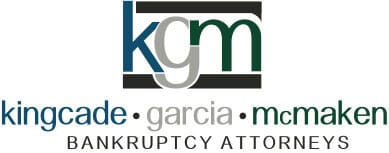Will bankruptcy rates soar in 2023?
With credit card debt at an all-time high, such predictions may not be far from the truth. Data from the online banking information site, Bankrtate.com, reports almost half of Americans carry credit card and other forms of debt over from month-to-month. This is a big jump from last year when the rate was a reported 39%.
A report from The Associated Press dug into the issue, finding that over a third of Americans voiced concern that their household debt is higher than it was last year. The majority of those in this group tend to be younger and have lower credit scores. Pair these already struggling households with the current rise in inflation, and we may see a jump in bankruptcy filings in 2023.
What causes bankruptcy?
Bankruptcy is rarely caused by a single factor. Those who file for relief through bankruptcy can often point to a variety of issues that contributed to their financial hardship. One of the most common examples is a story that starts with a loss of employment that leads to struggles to make mortgage payments and cover the cost of necessities, like food and utilities. This often leads to a reliance on credit cards, which carry high interest rates.
As consumers are forced to allow the balance to roll over month after month it can quickly skyrocket, leaving a total owed that is hardly even recognizable.
Frustrating as this situation is, those who can relate may take comfort in the numbers reported at the start of this article. Clearly, you are not alone.
As bankruptcy attorneys, we see credit card debt as one of the most common problems facing those with serious financial challenges. It’s not surprising with the high interest rates, fees, penalties, and the never-ending minimum payments that don’t even make a dent in the total.
When is bankruptcy the right choice?
If negotiations with creditors and lenders is not successful, filing for bankruptcy is a viable option for those struggling with credit card debt. Chapter 7 is the fastest form of consumer bankruptcy and forgives most unsecured debts like credit card debt, medical bills, and personal loans. There are certain qualifications a consumer must meet in regard to income, assets, and expenses to file for Chapter 7 bankruptcy, which is determined by the bankruptcy means test.
The bankruptcy system provides a fresh financial start. But when is it the right choice? One way to help answer this question is to look at your credit score over the last few years. Those who are struggling to make their monthly payments will likely notice a decline in their credit score. When the struggles are serious, the negative impact of a bankruptcy may cause less damage than the continual impact of failing to pay bills.
Depending on which type of bankruptcy you choose, it can also offer an opportunity to reorganize debt into more manageable payment plans. Regardless, starting over with a successful petition for relief through bankruptcy paired with paying bills on time after completing bankruptcy will work to rebuild your credit score. In time, you can re-establish your credit and move on.
Once you decide to consider bankruptcy it is wise to seek legal counsel. There are different options that offer different types of relief. Two of the most common for individuals are the Chapter 7 and the Chapter 13. The first discharges, or forgives, debt while the second restructures debt into payment plans. An attorney experienced in debt relief can review your situation and help you choose the option that best fits your needs.
















